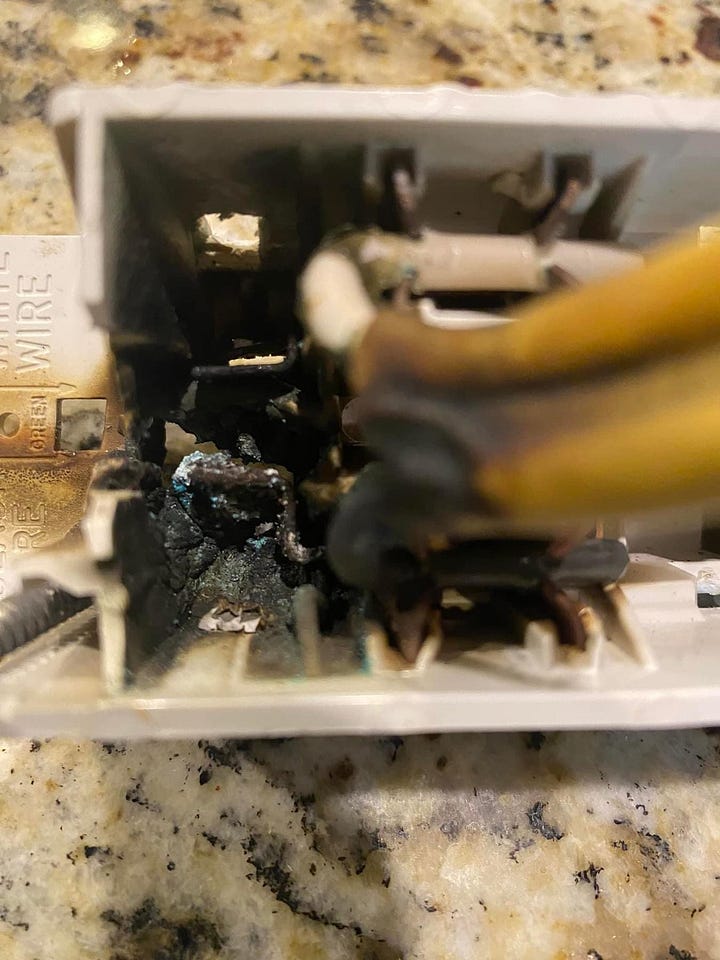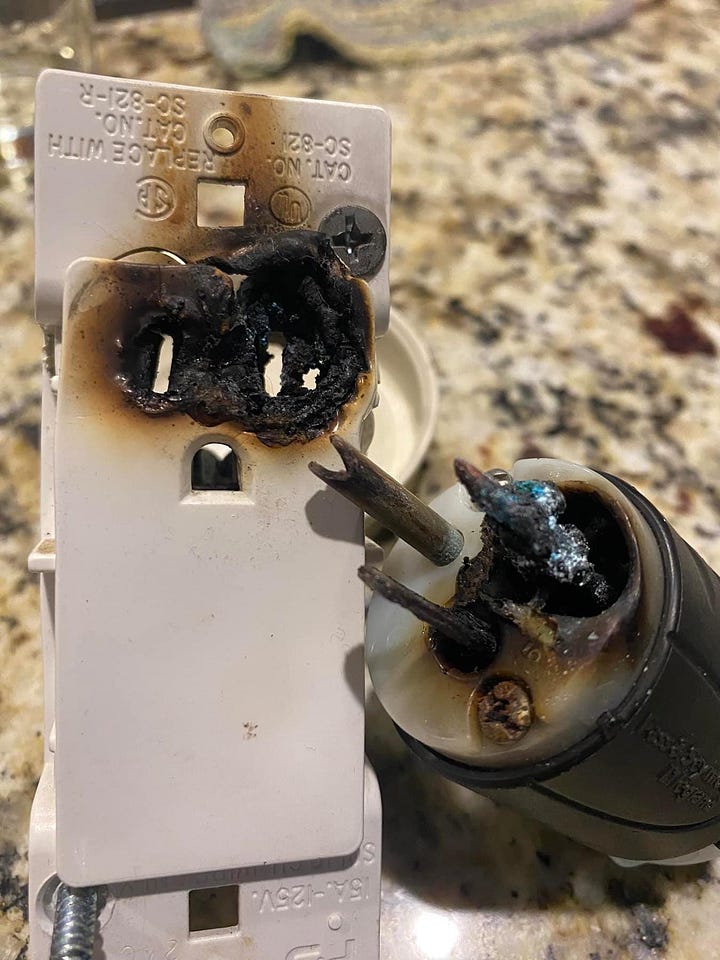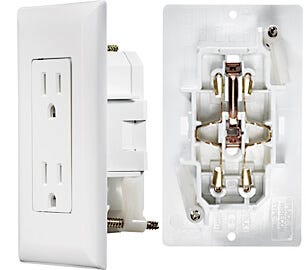There were some great comments as to what caused the water heater plug and outlet meltdown that I posted about yesterday. If you missed it, read all about it HERE.
2007 Phaeton - this is the hot water heater plug. The heater plugs into outlet mounted on wall on left side of heater in cargo area. First sign of trouble was circuit breaker tripping. My husband changes 120-volt thermostat, heating element, and on- off switch on heater- finally found this- plug was secure in outlet. This thing could have caught fire! No idea what caused this - any ideas?


The Key Points
This is a 2007 RV, so that’s a 17 year-old installation.
While modern RVs have hard-wired water heater wiring, plugs and outlets on a dedicated circuit breaker were often installed in older RVs.
The circuit breaker was tripping, so something was drawing excessive current.
The contacts got hot enough to lock the plug in place (“
plug was secure in outlet”)The plug appears to be a high-end brand rated for heavy-duty use.
The wall receptacle is a stab-type outlet common in most RVs.
Here’s your theories and questions…
It could have been an aftermarket plug installed so they could work on the water heater.
Perhaps, but that looks like a heavy-duty plug typical of that era. One thing I do worry about is that plug was probably terminated to Romex type wiring with solid conductors, and that tends to loosen up during road vibration. - Mike
Was this caused by a power surge?
I’m pretty sure not… That’s a catch-all phrase used for a lot of different things. If this was a short-duration voltage spike, it wouldn’t damage the plug and receptacle. That type of surge blows up electronics. If it was a long-duration over-voltage event (caused by an open neutral on the split-phase serivce, or by plugging the RV into a 240-volt outlet) it should have quickly tripped the 15-amp circuit breaker, and not cause that kind of damage. And most of the other appliances would have been damaged. - Mike
Maybe someone installed a heater element with too much wattage?
While it’s possible to install a high-wattage heater element, it would be designed for residential 240-volt service, not the 120-volts in your RV. So instead of drawing too much amperage, a 240-volt heater element would only draw 1/4 of its rated wattage when powered with 120-volts. Ohm’s Law! - Mike
This is a 15-amp plug that was overloaded?
I don’t think that was a factor. Remember that 15-amp male plugs are actually rated for 20-amps of current, and a 1,440-watt heater element only draws 12 amps of current. (1,440 watts / 120 volts = 12 amperes) - Mike
Was this caused by contact oxidation due to dampness?
Perhaps, but the heating seemed to be mostly concentrated on the rear of the outlet, not in the plug contacts themselves. However, I would need to get a closer look to be sure. - Mike
The terminating screws in the plug loosened up and created high-resistance heating…
That could be part of this failure, but most of the heat damage appears to have occured on the back of the wall outlet, not in the plug. - Mike
Why did the circuit breaker trip?
Looks like the conductors on the back of the outlets overheated to the point where the insulation melted and the conductors made contact. - Mike
Was it caused by loose connections on the back of the stab outlet?
This is on the top of my failure list. Stab-type outlets are used in RVs since they’re quick to install and don’t need a lot of wall depth. However, if not installed correctly these type of outlets can easily overheat with high current loads. I never use this type of outlet for critical or continuous loads.
Due to limited contact termination area, stab outlets (a type of IDC or Insulation Displacement Connector) are really not the best choice for high-amperage loads like water heaters, microwave ovens and electric fireplaces. Couple this with normal ambient heating/cooling cycles (which creates contact creep that loosen connections) and you have a recipe for a high-resistance connection that can overheat. Once overheating begins, then the stab contacts loosen up, which causes more resistance, which causes more heating, etc… This is the type of meltdown failure I’ve seen in all types of connections in the various industries I’ve worked in. - Mike
What you can do to be safe…
If your water heater or electric fireplace are plugged into an outlet rather than being direct wired, then you should inspect it for signs of overheating at least once a season (probably more). But the best solution would be to hardwire them into a box instead of a plug and receptacle. If you do, then WAGO connectors would be a better option than wire nuts since you could easily disconnect the wiring if need be for service.
Any other theories?
If so, please comment below. But I’m betting it was caused by the stab outlet wiring connection failure.
Let’s place safe out there… Mike







you should do an article on properly replacing a bad "stab" outlet.
Our motorhome's WFCO 8955 power center has instructions for periodically retorquing all connections with a torque screwdriver, to their specifications (printed on the back of the panel cover).
Is there a similar preventive maintenance philosophy for the remainder of the 120VAC circuit connections, especially with the outlets (including stab outlets).